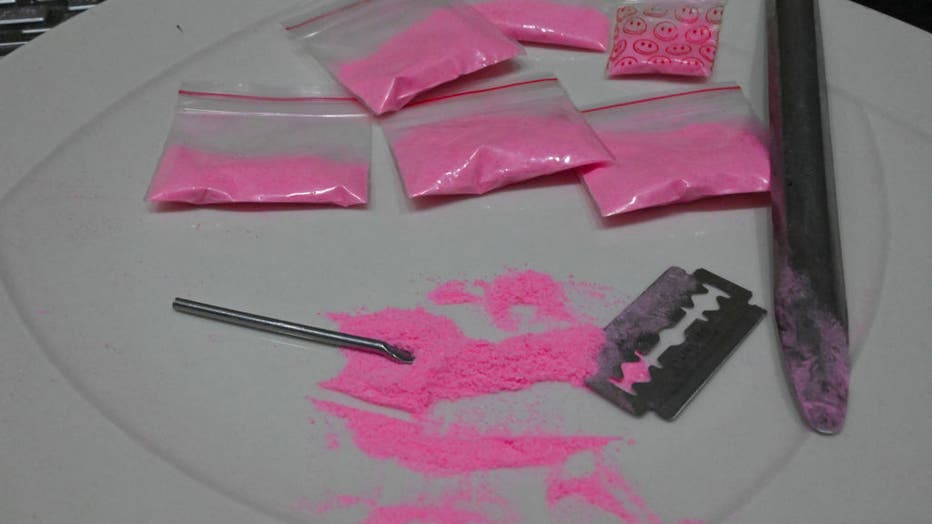Suspected 'pink cocaine' seized during River North traffic stop, 2 arrested

Pictured is Joscarlis Rondon, 23, and Alfonso Carpentero, 24.
CHICAGO - Two people are in custody after authorities found suspected "pink cocaine" and a firearm during a traffic stop in the River North neighborhood earlier this week.
Cook County deputies conducted the stop on Oct. 23 in the 300 block of Wells Street, leading to the arrests of Joscarlis Rondon, 23, and Alfonso Carpentero, 24.
Rondon is charged with aggravated unlawful use of a weapon. Carpentero faces charges of manufacturing and delivering a controlled substance, aggravated battery to a peace officer, and attempting to disarm a peace officer.
According to the sheriff's office, Carpentero tried to take an officer's weapon and "repeatedly struck the officer" during a struggle.
Deputies said they recovered a firearm and suspected "pink cocaine,"– a candy-colored powdery substance believed to be a blend of ketamine, ecstasy, and/or opioids.

Bags containing a powder known as Tussi or pink cocaine are pictured in Medellin, Colombia, on April 2, 2022. - Three decades after Pablo Escobar's shot body was left on a Medellin rooftop, drug trafficking continues and, at present, markets for flav
What is ‘pink cocaine’ and why is it popular?
"Pink cocaine" has made recent headlines after being reportedly linked to the death of former One Direction singer Liam Payne and mentioned in a lawsuit against Sean "Diddy" Combs.
It's been described as a "designer drug" or is referred to as "Tusi." According to a report from FOX 5 NY, the drug has gained popularity due to its low price and is being sold in underground venues in New York.
RELATED: What is 'tusi', 'pink cocaine'? The colorful new designer drug that's taking over
Several samples of the powdery substance have been shown to contain methylenedioxymethamphetamine (MDMA), methamphetamine, cocaine, opioids, and/or new psychoactive substances, according to the National Library of Science.
Narcotics experts who spoke with FOX 5 New York noted that there typically only a small amount of cocaine in the drug, which can make it difficult to determine its other components.

